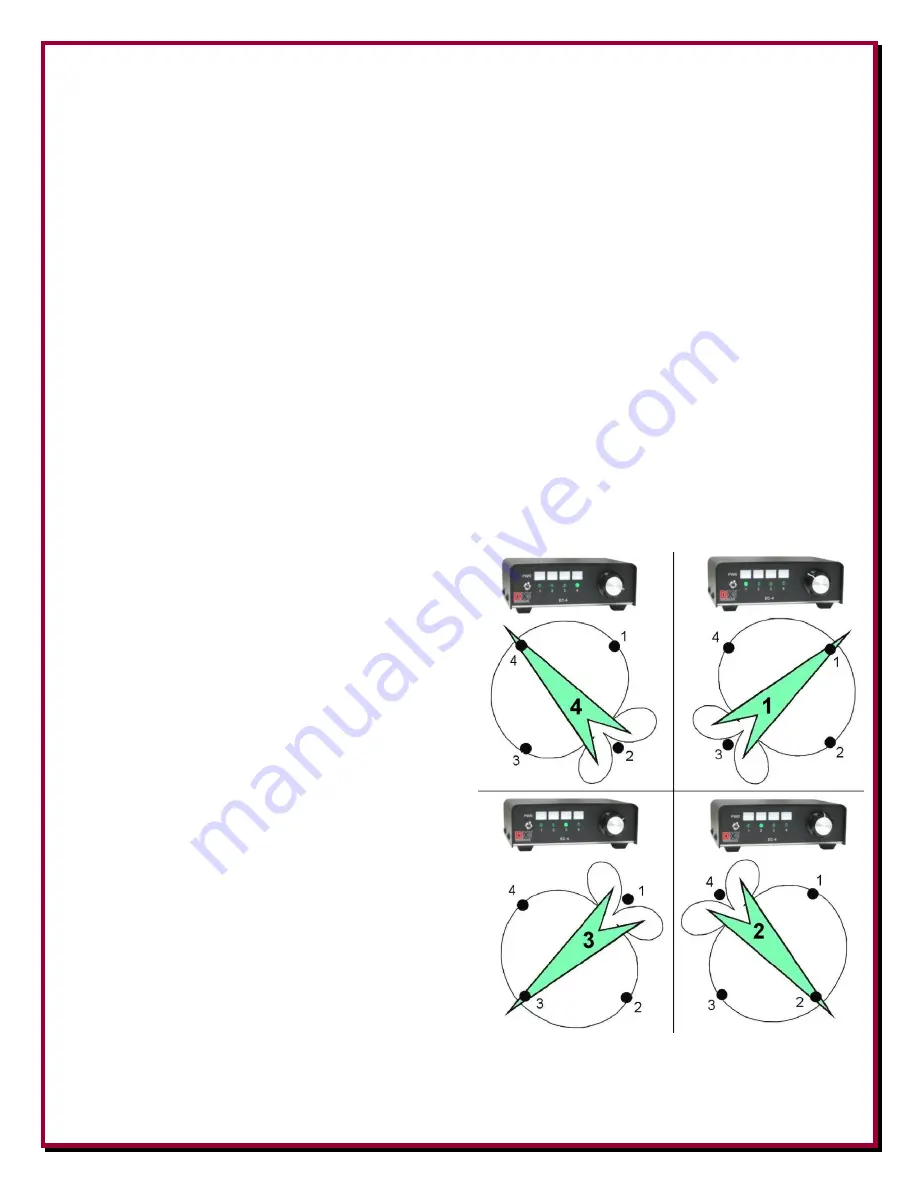
21
Optimizing the Array
To determine if the antenna system output level is the limiting factor, tune the receiver to the lowest
band at the quietest operating time. This is usually when propagation is poor but some signals are
heard. Disconnect the antenna and set the receiver to the narrowest selectivity you expect to use.
Receiver noise power is directly proportional to receiver bandwidth (going from 2.5 kHz selectivity
to 250 Hz selectivity reduces noise by 10 dB). Connecting the antenna should result in a noticeable
increase in noise. If so, the array signal level is sufficient and further optimization or amplification
may not be needed.
If the array is used on 160m or below, the Active Antenna internal jumper should be set as shown in
the Installation Section of this manual. If the array still lacks sensitivity on the lower bands, then a
preamplifier with high dynamic range should be used to compensate for the low signal level. Using
a preamplifier when sufficient signal is already present may result in amplification of the noise
along with the signal.
It is always best to use the least gain possible
. Depending on conditions, a
preamplifier can cause receiver overload; this may require an attenuator or bypassing the
preamplifier.
The
DXE-RPA-1
HF Preamplifier has better dynamic range than most receivers and can be used to
compensate for the decrease in array signal output. The
DXE-RPA-1
preamplifier is automatically
bypassed when power is removed.
Front-to-Rear (Null) Optimizing
The
DXE-RFS-2
is factory adjusted to the correct
settings for most coaxial cables. In some cases, the
null depth may need to be adjusted to compensate
for inaccurate delay line lengths. To adjust the null
depth, tune to a strong steady signal off the back
of the antenna’s selected direction and adjust R4
and R8 for the deepest null (weakest signal off the
back). Use
Figure 5
to locate R4 and R8 near the
center of the circuit board.
Operation
When using the
DXE-RFS-2
, positions 1 though 4
on the
EC-4
BCD Control Box will phase the
appropriate active vertical elements to give you
excellent receiving capabilities.
The front to back signal to noise ratio of the active
vertical elements in the four phase array allow you
to not only enhance the desired received signal,
but also to decrease an unwanted receive signal by
selecting a position that will drastically reduce or eliminate it.
















































